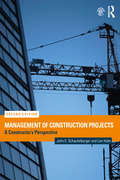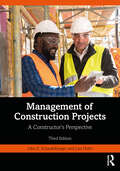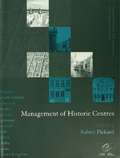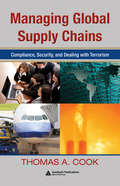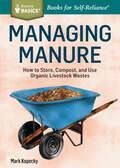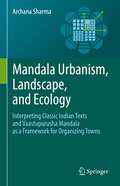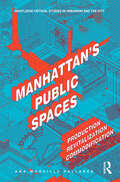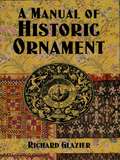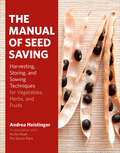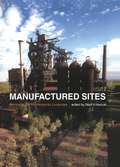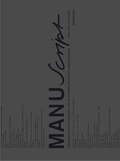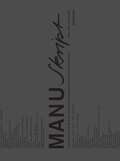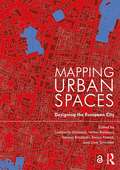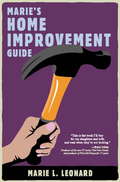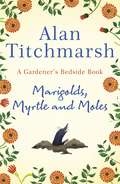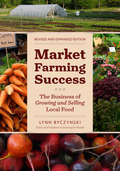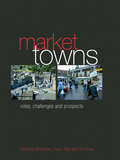- Table View
- List View
Management of Construction Projects: A Constructor's Perspective
by John E. Schaufelberger Len HolmUnlike the majority of construction project management textbooks out there, Management of Construction Projects takes a distinctive approach by setting itself in the context of a single and real-world construction project throughout and also by looking at construction project management from the constructor’s perspective. This project-based learning approach emphasizes the skills, knowledge, and techniques students require to become successful project managers. This second edition uses a brand new, larger, and more challenging case study to take students through key stages of the process, including: contracts and subcontracting; estimating, scheduling, and planning; supply chain and materials management; cost control, quality, and safety; project leadership and ethics; and claims, disputes, and project close-outs. Also new to this edition is coverage of emergent industry trends such as LEAN, LEED, and BIM. The book contains essential features such as review questions, exercises, and chapter summaries, while example plans, schedules, contracts, and other documents are stored on a companion website. Written in straightforward language from a constructor’s perspective, this textbook gives a realistic overview and review of the roles of project managers and everything they need to know in order to see a successful project through from start to finish.
Management of Construction Projects: A Constructor's Perspective
by John Schaufelberger Len HolmUnique among construction project management textbooks, Management of Construction Projects, third edition, takes the constructor’s perspective, carefully analyzing a complex, real-world construction case study from multiple angles to demonstrate the skills, knowledge, and techniques students require to become successful project managers. Popular as an undergraduate text and as a contractor resource, the book identifies key stages of the project-management process, such as delivery methods and contracts; estimating, planning, and scheduling; preconstruction services; subcontracting and material management; documentation, communications, and payment; controls, quality, and safety; leadership and ethics; and claims, disputes, and close-out.This third edition includes a novel case study, a new chapter on preconstruction services, updated contract forms and figures, and additional student exercises, and integrates use of project management technology. Topics include building information models, sustainable construction, environmental compliance, lean construction, and off-site construction. Boxed examples, or short case studies, have been included with each chapter. These examples correspond directly to the chapters in which they are included and give the reader an applied approach to learning the concepts presented.While primarily focused on the management of commercial projects, the principles and techniques in Management of Construction Projects also apply to residential, industrial, and heavy construction. Written in straightforward language from a constructor’s perspective, this textbook prepares upcoming construction project managers with everything they need to see a successful project through from start to finish.
Management of Construction Projects: A Constructor's Perspective
by John Schaufelberger Len HolmUnique among construction project management textbooks, Management of Construction Projects, third edition, takes the constructor’s perspective, carefully analyzing a complex, real-world construction case study from multiple angles to demonstrate the skills, knowledge, and techniques students require to become successful project managers. Popular as an undergraduate text and as a contractor resource, the book identifies key stages of the project-management process, such as delivery methods and contracts; estimating, planning, and scheduling; preconstruction services; subcontracting and material management; documentation, communications, and payment; controls, quality, and safety; leadership and ethics; and claims, disputes, and close-out.This third edition includes a novel case study, a new chapter on preconstruction services, updated contract forms and figures, and additional student exercises, and integrates use of project management technology. Topics include building information models, sustainable construction, environmental compliance, lean construction, and off-site construction. Boxed examples, or short case studies, have been included with each chapter. These examples correspond directly to the chapters in which they are included and give the reader an applied approach to learning the concepts presented.While primarily focused on the management of commercial projects, the principles and techniques in Management of Construction Projects also apply to residential, industrial, and heavy construction. Written in straightforward language from a constructor’s perspective, this textbook prepares upcoming construction project managers with everything they need to see a successful project through from start to finish.
Management of Historic Centres
by Robert PickardThis book examines key themes for the management of historic urban centres within a representative sample of centres in different European countries. The twelve historic centres that have been chosen are spread throughout Europe. They are diverse in character and the range includes small towns, cities and urban centres within cities. Some have been designated by UNESCO as World Heritage Sites or Cities, whilst others have recognition, or have been proposed as European Cities of Culture. The centres have all faced different problems and a variety of approaches have been utilised which are also examined. For each of the historic centres in the book the authors broadly cover a number of common themes: the policy and planning framework; management and regeneration action; environmental management; tourism and heritage management; and sustainability.
Management of Historic Centres (Conservation Of The European Built Heritage Ser.)
by Robert PickardThis book examines key themes for the management of historic urban centres within a representative sample of centres in different European countries. The twelve historic centres that have been chosen are spread throughout Europe. They are diverse in character and the range includes small towns, cities and urban centres within cities. Some have been designated by UNESCO as World Heritage Sites or Cities, whilst others have recognition, or have been proposed as European Cities of Culture. The centres have all faced different problems and a variety of approaches have been utilised which are also examined. For each of the historic centres in the book the authors broadly cover a number of common themes: the policy and planning framework; management and regeneration action; environmental management; tourism and heritage management; and sustainability.
Managing Global Supply Chains: Compliance, Security, and Dealing with Terrorism
by Thomas A. CookSeptember 11, 2001 had a profound impact upon individuals, institutions, and governments, but also upon the world of global trade. Years later, the reverberations of this deliberate and focused act of terrorism are manifest in much more stringent logistics, documentary requirements, and regulations. A single source on compliance and security, writt
Managing Manure: How to Store, Compost, and Use Organic Livestock Wastes. A Storey BASICS®Title (Storey Basics)
by Mark KopeckyThis guide delivers essential information on using animal waste to improve soil health, prevent nutrient loss, and improve crop quality and yield safely and sustainably.
Mandala Urbanism, Landscape, and Ecology: Interpreting classic Indian texts and Vaastupurusha mandala as a framework for organizing towns
by Archana SharmaClassic Indian texts and Vaastupurusha Mandala are not often discussed in the western discourse on urbanism, even while much of these predate the commonly taught European writings. This book sheds light on some of those forgotten concepts, thus making the lesser discussed classic Indian town organization ideas accessible to architecture, landscape, and urban planning students worldwide. The resonance of these concepts in present times are reviewed through case studies of select Hindu temple towns in India. Furthermore, the author underscores the formal abstraction of the classic Indian Mandala and transplants the discourse from sociology to socio-ecologically adept trans-disciplinary design thinking. The creative interpretations offer a premise to start revising classic models for current practice to influence the urbanism and ecology of a place in accordance with the changing climate.
Manhattan's Public Spaces: Production, Revitalization, Commodification (Routledge Critical Studies in Urbanism and the City)
by Ana Morcillo PallarésManhattan’s Public Spaces: Production, Revitalization, Commodification analyzes a series of architectural works and their contribution to New York’s public space over the past few decades. By exploring a mix of urban mechanisms, supportive frameworks, legal systems, and planning guidelines for the transformation of the city’s collective realm, the text frames Manhattan as a controversial landscape of interests and concerns to authorities, communities, and, very importantly, developers. The production, revitalization, and commodification of Manhattan’s public spaces, as a phenomenon and as a subject of study, also highlights the vicissitudes of the reconciliation of the many different agents, which are part of the process. The challenge of the book does not only lie in the analysis of good design but, more importantly, in how to understand the functional mechanisms for the current trends in the production of space for public use. A complex framework of actors, governance, and market monopolies, which invites the reader to participate in the debate of how these interventions contribute, or not, to an inclusive environment anchored in the existing built fabric. Manhattan’s Public Spaces invites reflection on the revitalization of the city’s shared space from all dimensions. Beautifully illustrated in black and white, with over 50 images, this book will be of interest to scholars and students in architecture, planning, and urban design.
Manhattan's Public Spaces: Production, Revitalization, Commodification (Routledge Critical Studies in Urbanism and the City)
by Ana Morcillo PallarésManhattan’s Public Spaces: Production, Revitalization, Commodification analyzes a series of architectural works and their contribution to New York’s public space over the past few decades. By exploring a mix of urban mechanisms, supportive frameworks, legal systems, and planning guidelines for the transformation of the city’s collective realm, the text frames Manhattan as a controversial landscape of interests and concerns to authorities, communities, and, very importantly, developers. The production, revitalization, and commodification of Manhattan’s public spaces, as a phenomenon and as a subject of study, also highlights the vicissitudes of the reconciliation of the many different agents, which are part of the process. The challenge of the book does not only lie in the analysis of good design but, more importantly, in how to understand the functional mechanisms for the current trends in the production of space for public use. A complex framework of actors, governance, and market monopolies, which invites the reader to participate in the debate of how these interventions contribute, or not, to an inclusive environment anchored in the existing built fabric. Manhattan’s Public Spaces invites reflection on the revitalization of the city’s shared space from all dimensions. Beautifully illustrated in black and white, with over 50 images, this book will be of interest to scholars and students in architecture, planning, and urban design.
Manual Drafting for Interiors
by Christine CavataioThe interior designer's guide to effective hand drafting The kinesthetic act of completing a manually drafted drawing gives interior designers a greater understanding of the space they're designing, time to reflect on their work, and the skills needed to quickly draw freehand for presentations and design concept developments. Manual Drafting for Interiors is an essential reference for interior designers learning how to manually draft scaled floor plans, elevations, sections, and three-dimensional drawings. Clearly explaining techniques and methods, it begins with an explanation of drafting tools and their various uses, and then presents instructions and illustrations that indicate how to complete increasingly more difficult drafting conventions. Additionally, readers will learn drawing techniques for indicating various materials, symbols for coordinating related drawings, and architectural lettering. Complemented with extensive drawings, inspiring examples, and tips for developing your own style of graphic expression, Manual Drafting for Interiors arms readers with essential skills they'll use throughout their career as a designer.
Manual Drafting for Interiors, Enhanced Edition
by Christine CavataioThe interior designer's guide to effective hand drafting The kinesthetic act of completing a manually drafted drawing gives interior designers a greater understanding of the space they're designing, time to reflect on their work, and the skills needed to quickly draw freehand for presentations and design concept developments. Manual Drafting for Interiors is an essential reference for interior designers learning how to manually draft scaled floor plans, elevations, sections, and three-dimensional drawings. Clearly explaining techniques and methods, it begins with an explanation of drafting tools and their various uses, and then presents instructions and illustrations that indicate how to complete increasingly more difficult drafting conventions. Additionally, readers will learn drawing techniques for indicating various materials, symbols for coordinating related drawings, and architectural lettering. Complemented with extensive drawings, inspiring examples, and tips for developing your own style of graphic expression, Manual Drafting for Interiors arms readers with essential skills they'll use throughout their career as a designer.
A Manual of Historic Ornament
by Richard GlazierExceptionally comprehensive, easy-to-use guide surveys the evolution of historic ornament in architecture and the applied arts — from primitive ornaments of Oceania, Egypt, and Assyria to a Gothic doorway in Amiens, the tomb of Lorenzo de Medici, and a classic early-19th-century sofa by Thomas Hope. Over 700 black-and-white illustrations. 16 plates of photographs.
The Manual of Seed Saving: Harvesting, Storing, and Sowing Techniques for Vegetables, Herbs, and Fruits
by Andrea HeistingerAs small-scale gardens and farms continue to pop up in back yards and on balconies, food growers are embracing the process by planting, preserving, and pickling their produce. Now this guide offers the expertise needed to carry that sensibility even further to practice seed saving.
Manufactured Sites: Rethinking the Post-Industrial Landscape
by Niall Kirkwood**This title was originally published in 2001. The version published in 2011 is a PB reprint of the original HB** Manufactured Sites focuses on the legacy of industrial production and pollutants on the contemporary landscape and their influence on new scientific research, innovative site technologies and progressive site design. It presents innovative environmental, engineering and design approaches along with ongoing research and built projects of international significance. Contributions range from innovative scientific engineering research from industry and federal agencies to contemporary international and regional professional reclamation and redevelopment projects such as the 2000 Olympic Games in Sydney, Australia and the A.G. Thyssen steelworks and blast furnace planning in Germany's Ruhr region.
Manufactured Sites: Rethinking the Post-Industrial Landscape
by Niall Kirkwood**This title was originally published in 2001. The version published in 2011 is a PB reprint of the original HB** Manufactured Sites focuses on the legacy of industrial production and pollutants on the contemporary landscape and their influence on new scientific research, innovative site technologies and progressive site design. It presents innovative environmental, engineering and design approaches along with ongoing research and built projects of international significance. Contributions range from innovative scientific engineering research from industry and federal agencies to contemporary international and regional professional reclamation and redevelopment projects such as the 2000 Olympic Games in Sydney, Australia and the A.G. Thyssen steelworks and blast furnace planning in Germany's Ruhr region.
Manuscript: Essentials for the Everyday Use of Interior Architects and Designers
by Axel Müller-SchöllThis book provides essential introductory information for designers and interior designers. From the realm of interior design, for example, it deals with ceilings, floors, doors, windows, stairs, etc. – from that of material science, with carpets, wallpaper, wall paint, glass, wood materials, stone, and concrete. It also presents architectural drawing: techniques of representation, descriptive geometry, technical drawing, standard dimensions, signs and symbols, and mathematical foundations; attention is also given to the fundamentals of graphic design, preparing documents for publication, file formats, and color systems. All of this is generously leavened with practical examples; original essays by Ruedi Baur, Axel Kufus, Norbert Rademacher, Martin Kunz, and others; and thought-provoking quotations. If they want to, readers may separate the pages of the Japanese binding – this way they get room to add their personal notes and comments.
Manuskript: Essentials für den Alltag von Innenarchitekten und Designern
by Axel Müller-SchöllDas Buch bietet grundlegende erste Informationen für Innenarchitekten und Designer. Aus den Gebieten der Innenraumgestaltung zu Decken, Fußböden, Wänden, Türen, Fenstern, Treppen etc. Aus der Materialkunde: zu Teppichen, Tapeten, Wandanstrichen, Glas, Holzwerkstoffe, Stein, Beton. Ein weiterer Schwerpunkt ist dem Entwerfen und Aufzeichnen gewidmet: Darstellungstechniken, darstellende Geometrie, technische Zeichnungen, Orientierungsmaße, Zeichen und Symbole und mathematische Grundlagen; hinzu kommen grafische Grundbegriffe, Elemente der Druckvorstufe, Dateiformate und Farbsysteme. Ergänzt und veranschaulicht werden die Informationen mit Praxisbeispielen, originalen Textbeiträgen von Ruedi Baur, Axel Kufus, Norbert Rademacher, Martin Kunz u.a. sowie anregenden Zitaten. Falls der Leser, die Nutzerin des Buches wollen, können die Seiten in Japanbindung aufgetrennt werden: es entsteht so immer wieder Raum für persönlichen Ergänzungen und Notizen.
Mapping Urban Spaces: Designing the European City
by Lamberto Amistadi Valter Balducci Tomasz Bradecki Enrico Prandi Uwe SchröderMapping Urban Spaces focuses on medium-sized European cities and more specifically on their open spaces from psychological, sociological, and aesthetic points of view. The chapters illustrate how the characteristics that make life in medium-sized European cities pleasant and sustainable – accessibility, ease of travel, urban sustainability, social inclusiveness – can be traced back to the nature of that space. The chapters develop from a phenomenological study of space to contributions on places and landscapes in the city. Centralities and their meaning are studied, as well as the social space and its complexity. The contributions focus on history and theory as well as concrete research and mapping approaches and the resulting design applications. The case studies come from countries around Europe including Poland, Italy, Greece, Germany, and France, among others. The book will be of interest to students, scholars, and practitioners in architecture, urban planning, and landscape architecture.
Mapping Urban Spaces: Designing the European City
by Lamberto Amistadi Valter Balducci Tomasz Bradecki Enrico Prandi Uwe SchröderMapping Urban Spaces focuses on medium-sized European cities and more specifically on their open spaces from psychological, sociological, and aesthetic points of view. The chapters illustrate how the characteristics that make life in medium-sized European cities pleasant and sustainable – accessibility, ease of travel, urban sustainability, social inclusiveness – can be traced back to the nature of that space. The chapters develop from a phenomenological study of space to contributions on places and landscapes in the city. Centralities and their meaning are studied, as well as the social space and its complexity. The contributions focus on history and theory as well as concrete research and mapping approaches and the resulting design applications. The case studies come from countries around Europe including Poland, Italy, Greece, Germany, and France, among others. The book will be of interest to students, scholars, and practitioners in architecture, urban planning, and landscape architecture.
Marie's Home Improvement Guide
by Marie L. LeonardTired of paying the painter to create a mess on your floors? Can’t be held up another day waiting for a plumber between 9 and 5? Feeling threatened by the growing pile of fix-it projects in your basement? Marie’s Home Improvement Guide offers all the tips you need to tackle these projects ... yourself! Marie L. Leonard, owner of her own home improvement business, has been teaching home repair to women for years. With the belief that women shouldn’t have to depend on others for home repair, Leonard is helping thousands of women save money and time, conquering the fear of do-it-yourself work. Marie’s Home Improvement Guide provides readers with the know-how to tackle projects around the house. Leonard covers the basics: introduction to tools, safety precautions, necessary prep-work, and shopping for the right materials. Leonard’s tips are written in an informative and accessible manner, paired with detailed illustrations. A reassuring source of encouragement, Marie’s Home Improvement Guide is a must-have book for all first-time do-it-yourselfers.
Marigolds, Myrtle and Moles: A Gardener's Bedside Book
by Alan TitchmarshThe perfect bedside book for the green-fingered - hilarious and touching poems on a gardening theme written and introduced by the nation's favourite gardener and presenter of ITV's Love Your Garden, Channel 5's Secrets of the National Trust and with his own show on Classic FM.From touching poems on the peony, the snowdrop and the sweet pea to hilarious verse on Emily the Gardener and the Garden Design Course, this is Alan Titchmarsh's heartfelt and entertaining celebration of his favourite space - the garden.
Market Farming Success: The Business of Growing and Selling Local Food, 2nd Editon
by Lynn ByczynskiAn insider's guide to market gardening and farming for those in the business of growing and selling food, flowers, herbs, or plants. Market Farming Success identifies the key areas that usually trip up beginners—and shows how to avoid those obstacles. This book will help the aspiring or beginning farmer advance quickly and confidently through the inevitable learning curve of starting a new business. Written by the editor of Growing for Market, a respected trade journal for market farmers, Market Farming Success condenses decades of growing experience from every part of the United States and Canada. It focuses on the factors that are common to market gardeners everywhere and offers professional advice that includes: • How much you'll need to spend to start a market farming business; • How much you can expect to earn; • Which crops bring in the most money—and whether you should grow them; • The essential tools and equipment you will need; • The best places to sell your products; • How to keep records to maximize profits and minimize taxes; • Tricks of the trade that will make you more efficient in the greenhouse, field, and market. This new Chelsea Green edition of a 2006 classic is greatly updated and expanded, and includes full-color photos, charts, and graphs, plus many inspiring and instructive profiles of successful market-farming pioneers.
Market Towns: Roles, challenges and prospects
by Neil PoweOriginal and insightful, this volume, giving in-depth consideration to the key issues affecting the future of market towns, provides readers with a framework for evaluating policy initiatives and progress in market towns.Through a detailed analysis of the characteristics of over 200 towns and in-depth studies of eleven towns in different parts of E
Market Towns: Roles, challenges and prospects
by Neil PoweOriginal and insightful, this volume, giving in-depth consideration to the key issues affecting the future of market towns, provides readers with a framework for evaluating policy initiatives and progress in market towns.Through a detailed analysis of the characteristics of over 200 towns and in-depth studies of eleven towns in different parts of E
